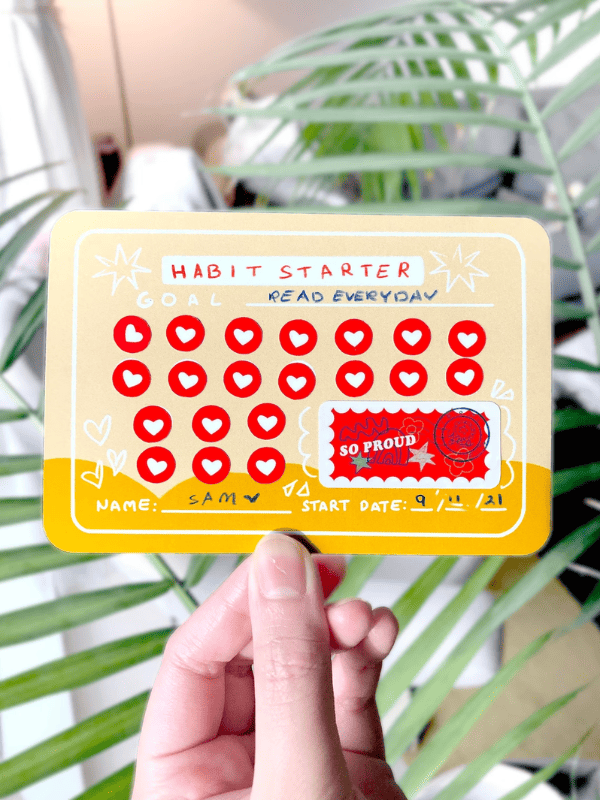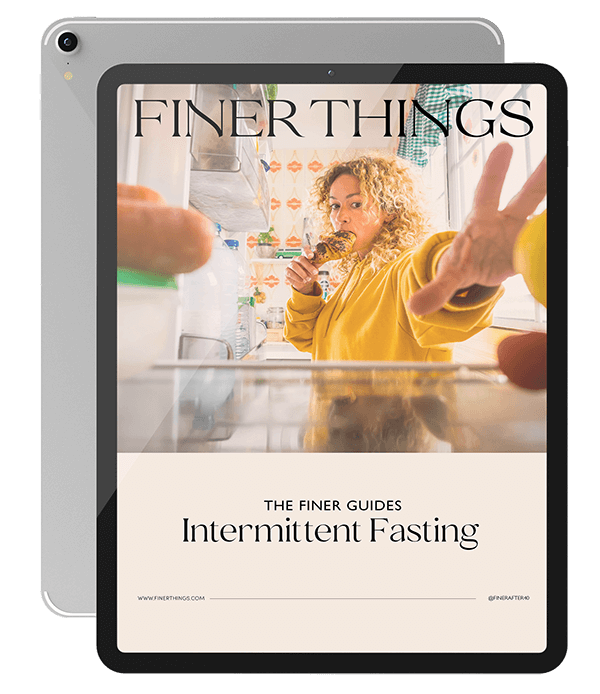Do New Year’s Resolutions Ever Work?

By Franki Hanke
Every year, we set out with bold New Year’s resolutions about how we’ll have the best highlight reel on next New Year’s Eve, but then, January is dark and cold; motivation fizzles out, and suddenly we’re back around consulting a frankly embarrassing list of motivational goals. If that’s you, you’re not alone.
Do New Year’s Resolutions Work?
Research says, “Probably.”
A 2020 experiment addressing the success of New Year’s resolutions found that when supported most resolutions are successful, however, they noted several reasons why their experimental group may be more successful than the average American.
- Participants volunteered for this, suggesting they had the motivation to set and pursue a goal.
- Many resolutions are non-specific so the degree of “success” is highly variable.
- Participants reported on their success and their behaviors were not verified.
Other research following participants for two full years found only 19% maintained their new habits for the full time. However, these successes did include “at least one slip” so success doesn’t need to be flawless.
Comparing folks who wanted a change in their life who either A) set a resolution about it or B) did not set a resolution, the resolving group had a higher success rate (46% compared to 4%).
So, if you have an idea in mind for a resolution, using the new year as an opportunity to set goals may increase your success in the coming year.
Why is weight loss such a hard goal?
Researchers have noted less success when the goal is to lose weight, but why?
There are two overarching explanations. Intentional weight loss is incredibly difficult and infrequently successful long-term, and “lose weight” is a bad goal. New goals are more successful when they are approach-focused with measurable outcomes and realistic expectations.
“Lose weight,” by comparison, is a non-specific goal. It’s measurable because you expect the scale to change, but your role in that goal isn’t defined.
How to Set New Year’s Resolutions for Success
If last year marked another New Year’s resolution fails, next year can be different! Increase your chances of success by defining better goals in the first place.
Use Approach Goals (Not Avoidance Goals)
Approach versus avoidance refers to the intention behind your goal. Most of us make New Year’s resolutions to avoid something negative.
“I want to lose weight so my mother stops making judgemental comments.”
“I want to eat better so I stop putting on the pounds.”
“I want to exercise more so I don’t huff on the stairs at work.”
Sound familiar?
These are avoidance goals. The intention behind the goal is to avoid something you don’t like, which is understandable, but psychologically it’s harder to follow through on actions when you’re avoiding something.
Instead, re-frame your mindset to be about approach or the positive benefit of the actions. This is easier to do with specific, actionable goals.
“I want to exercise today so I feel limber and energized.”
“I want to eat a serving of vegetables because it makes me feel taken care of and makes me healthier.”
“I want to get outside today because the sun helps my mood.”
Focus on Action (Not Outcome)
New Year’s resolutions often fall into the pitfall of being outcome-focused, “lose weight” or “be healthier” but on January 1st, it’s hard to know where to start!
Instead, break down your outcome into actionable, realistic goals that you can easily succeed. Focus on small actions repeated often. The ability to control your success is motivating in a way that an uncontrollable outcome isn’t.
What’s realistic?
If you set a massive goal for the end of the year, it’s unlikely it will actually work. Even if you put in a lot of hard work, if your goal is too big, you’ll be left with the same feeling of failure. Instead, be realistic with what behavior changes you can follow through on and what can even be changed with behavior alone.
If you’re aiming to “be healthier” or “lose weight,” for example, you’ll likely need more than your intervention, so to make those goals actionable, you need to involve realistic steps like scheduling a physical, discussing medical interventions, or hiring professional support.
What’s actionable?
The first week of the year, when you’re fired up to chase your goal, you should know step one. But, with a goal like “lose weight,” you’re likely floundering and fluctuating between different ideas for how.
Instead, make your goals focused on habits and repeated actions within a certain time frame. For example, “work out twice a week,” “try a new type of exercise once a month,” or “walk 30 minutes daily.” These have a clear, realistic path to success!
How?
If your goal feels intangible, ask yourself what success looks like and work backward. For example, if you want to “be more social.” What does that look like for you? Do you envision gatherings at home with a small friend group, frequent dates or meet-ups with new faces, or more time with people you already know and speak to?
Then, define the steps towards that vision. Already, your goal is getting more actionable and realistic.
Get The Finer Life
Our Sunday email has tips and content you will love – exclusively for our subscribers.
"*" indicates required fields
Leave Space for “Failure”
A realistic goal must account for the difficulty of new habits. Write your personal goals with space for these ahead of time. Instead of a daily habit, opt for a new habit to happen five out of seven days a week, for example.
This avoids the “Abstinence Violation Effect,” which is when a disruption to your new routine triggers a total abandonment.
Find Personal Motivation
Maintaining motivation is the challenge of new habits, but each of us needs different encouragement. Find what style works for you.
For some, publicizing their progress towards milestones with family or social media provides some social reward.
“There’s hundreds of studies in the health psychology literature suggesting in fact that social support does in fact make a difference,” said Dr. John Norcross of the University of Scranton as quoted by CBS Baltimore.
For others, the action of checking in on their progress is motivation enough. Using a habit tracker can provide a tangible way to see your progress over time.

As you kickstart a brand-new habit, use this small-business tracker which follows the first 20 days of a new habit with daily check-off stickers.
Tips for Popular New Year’s Resolutions
Fitness
Forbes surveyed 1,000 people and found fitness is a top priority of 48% of Americans. If you’re in the same boat, here’s how to approach this new goal.
Start Small
Goals should scale over time, so don’t jump into the deep end in January. Start small with length, intensity, and repetition of exercise. Focus on developing the habit of moving and letting the movement itself change over time once the act of doing something is a familiar habit.
Increase Variety
Exercise is a huge category and all kinds of movement are beneficial. Instead of planning to hit the gym for the same routine five days a week, build in different sub-goals that have variety in how you’re moving. Novel actions are more engaging to us and easier to stick to.
Experiment with new classes or visit new facilities or parks. Try joining all your friends for their go-to form of movement throughout the first few months.
Recover Aggressively
Working out is always challenging as you’re constantly pushing your limit, but especially early on constant muscle fatigue can be a huge deterrent. Be aggressive and dedicated to your recovery as much as you are the fitness.
1. Sleep
Be sure you’re sleeping well to rest your body. Download our full-length guide The Well-Rested Woman for free to learn how to improve your sleep.
2. Muscle Ache
Tackle sore muscles with some helpful products, especially those using magnesium or menthol which have the most noted effects. For daily application, use the massage therapist’s favorite Life Flo Magnesium Lotion.
For soaking, use a magnesium or Epsom salt soak.
3. Muscle Tension
Schedule a massage as a recovery and reward a month into the year and/or invest in an at-home massage gun by Therabody to tackle tense muscles.
Diet
Be Additive, Not Restrictive
It’s easier to add new habits than to break old ones, especially when you’re linking to an existing action. So, instead of cutting out food groups, try adding new ones.
When it comes to food, we all need more vegetables. Though there are some other foods we could benefit from too…
If you want to start improving your diet, try adding a serving of vegetables to every meal. It could be a separate side or introduce vegetables right into existing meal elements. Spinach, in particular, is easily softened into soups or sauces and absorbs all the existing flavors!
As you add your desired foods in, you’ll naturally make it easier to lessen the amount you eat other foods especially as you find the ingredients and recipes you enjoy.
The new year provides us with a fresh start, but it’s also just another day. Use the power of the New Year’s resolutions to help you, not to limit you as you chase self-improvement. With the right combination of better goals, personal motivation, and helpful support you can achieve more than the previous year.
If you’re not sure what to focus on in the new year, try one of these six habits curated to make you happier.
The above content may contain affiliate links. When you click and shop with our links, we receive a small commission to support our writers. As an Amazon Associate, we earn from qualifying purchases.

Want a Free Guide?
You will receive our free 19-page guide and access to our exclusive content, private invitations, and tips you’ll love.
"*" indicates required fields
Facebook Group




